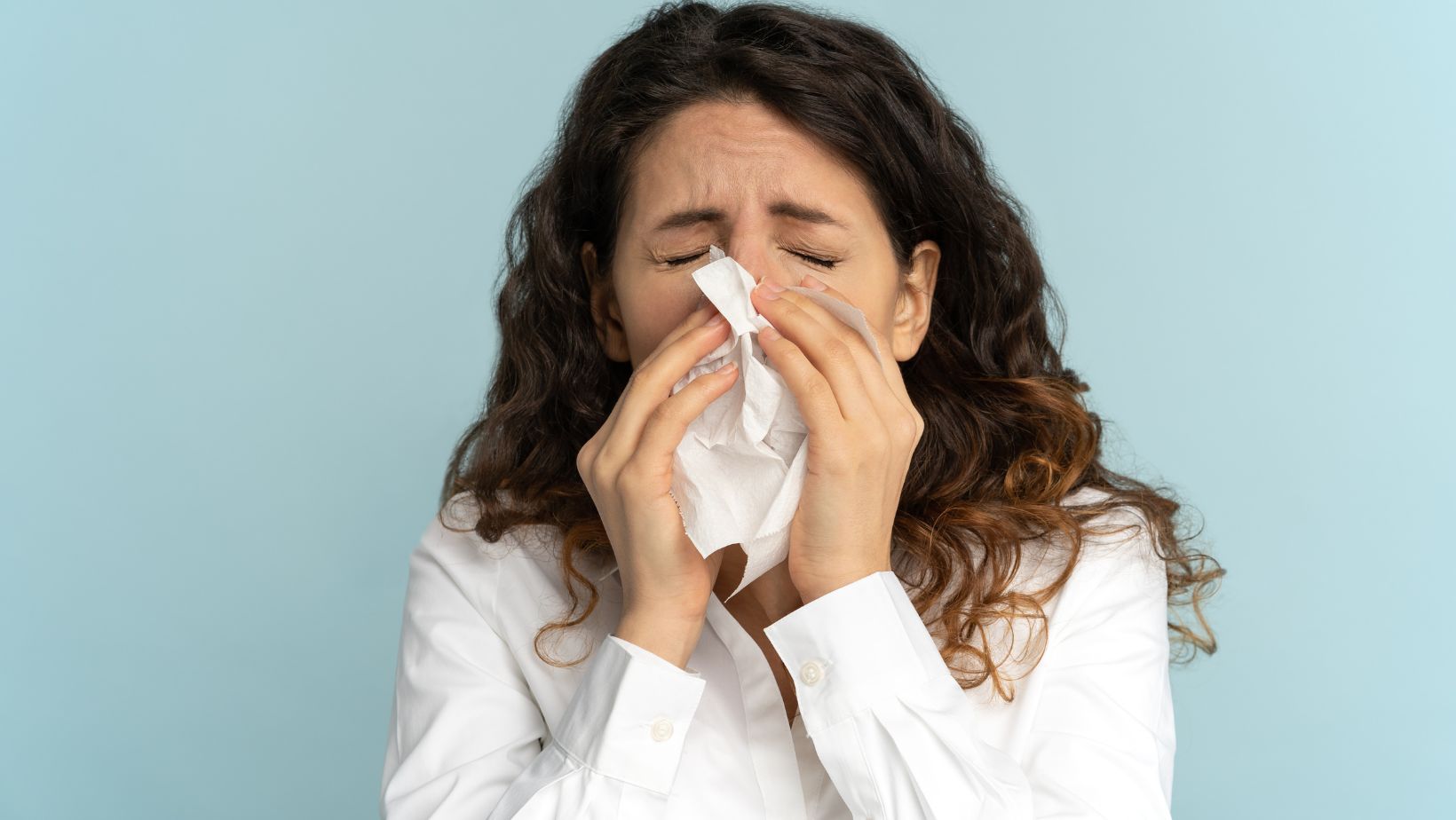Last Updated on September 21, 2025 by pm_author_91ksj

It starts with a little sneeze at bedtime. Then comes the itchy eyes, the restless nights, and the sound no mom wants to hear—your child sniffling and tossing in their sleep. At first, you might blame the weather. Maybe spring is just showing off. But after a few weeks of trial and error, you might find that the real culprit isn’t just outside—it’s inside, too.
As moms, we work hard to create peaceful, cozy spaces for our families. We scrub, organize, and decorate with intention. But sometimes, the air we breathe or the bedding we snuggle can harbor things we can’t see, like dust mites, pet dander and pollen, all of which can quietly impact our health and comfort.
If you’ve ever felt overwhelmed trying to pinpoint what could be causing your child’s allergies (or your own), you’re not alone. The good news? You don’t need a complete renovation to make your home a healthier place. Just a few mindful tweaks can make a big difference. Here’s how you can allergy-proof your home without losing the cozy, lived-in feel you’ve worked so hard to create.
Understanding Common Household Allergens
First things first, it’s important that you know what kinds of allergens might be present in your home and causing the dreaded allergy flare-ups. These might include:
- Dust mites: Microscopic creatures that thrive in bedding, upholstery, and carpets.
- Pet dander: Tiny flakes of skin shed by cats, dogs, and other animals.
- Mold: Fungi that grow in damp areas like bathrooms and basements.
- Pollen: If you’re aiming for a simple yet powerful upgrade, incorporating air purifiers into your routine can help reduce airborne allergens, making it easier to maintain a cozy and healthy home environment.
Start With Where You Sleep (H2)
First things first, focus on your bedroom. We spend a good chunk of our time sleeping, so the bedroom should be a primary focus.
Here, do your best to wash bedding weekly. Launder sheets and pillowcases in hot water that is at least 130 degrees Fahrenheit to kill dust mites.
If possible, switch to allergen-proof bedding. Encase mattresses, box springs, and pillows in dust-mite-proof covers for added protection against allergens.
For an added bonus, kick carpets out of the room. Hard surfaces like hardwood or linoleum are easy to clean and don’t harbor allergens, making them the superior choice in bedrooms where people with allergies sleep.
Maintain Clean Air (H2)
Clean air plays a big part in allergy flare-ups. Unfortunately, inside air can be 2-5 times (up to 100 times) more polluted than outside air. So, as part of your larger allergen-proofing plan, improve your indoor air:

- Use HEPA filters: Install high-efficiency particulate air (HEPA) filters in your vacuum cleaner and air purifiers to trap allergens.
- Control humidity: Keep indoor humidity below 50% using dehumidifiers, especially in damp areas like basements.
- Ventilate properly: Use exhaust fans in kitchens and bathrooms to reduce moisture and prevent mold growth.
Be Mindful of Pets (H2)
While our furry friends are beloved family members, they can contribute to the indoor allergen problem. Thankfully, there are ways to minimize their allergen impact (that don’t involve going pet-free).
Regular grooming, including bathing and brushing, can help reduce dander. Cleaning your pet’s beds and toys regularly in hot water can help, too. You can also create pet-free zones, like bedrooms or dens, to minimize allergen spread.
Tackle Mold and Mildew (H2)
If mold and mildew take up residence in your home, the resulting allergies can be less than stellar (if you’re allergic to mold or mildew). So, address the issues promptly as you find them:
- Fix leaks: Repair any plumbing leaks or water damage immediately.
- Use mold-resistant products: Opt for mold-resistant paint in bathrooms and other high-moisture areas.
- Clean regularly: Scrub bathrooms and other damp areas with mold-killing solutions.
Reduce Clutter (H2)
Clutter can collect dust and make cleaning a whole lot more challenging. So, do yourself a favor by simplifying decor and organizing toys. If possible, limit your knick-knacks and decorative items to easily dustable items. Store your kids’ toys in closed bins or cabinets, where dust accumulation is less likely to occur.
Of course, that doesn’t mean dust won’t accumulate. You’ll still need to dust surfaces regularly with a damp cloth and vacuum regularly with a HEPA-filter vacuum.
Choose Cleaning Products Wisely (H2)
Certain cleaning products, especially those with caustic ingredients or excessive fragrance, can exacerbate allergies. So, choose your cleaning products wisely:
- Opt for fragrance-free: Select cleaning products without added fragrances or dyes.
- Use natural alternatives: Consider using vinegar, baking soda, and other natural cleaners.
- Read labels: Check for products labeled as hypoallergenic or designed for sensitive individuals.
Monitor Pollen Levels (H2)
If pollen is the culprit behind the allergies, take extra precautions during high pollen seasons. This can include:

- Keeping windows closed: Use air conditioning instead of opening windows to prevent pollen from entering.
- Changing clothes: After spending time outdoors, change clothes and shower to remove pollen.
- Drying laundry indoors: Avoid hanging clothes outside during high pollen days.
Consider Allergy Testing and Immunotherapy (H2)
If your or your child’s symptoms persist, it’s a good idea to chat with your healthcare provider. Allergies can majorly get in the way of daily life, especially if the symptoms are severe, and in these cases, more intervention might be necessary.
Your doctor can help pinpoint what allergies are causing the problem. They can also help you explore potential treatments, like over-the-counter antihistamines, decongestants, or corticosteroids.
They may even suggest allergy immunotherapy, a natural allergy medicine that “trains” your body to become less reactive to an allergen by gradually exposing it to increasing doses of that allergen. It takes time to work, usually requiring a long-term commitment of 3-5 years, but it has helped countless people improve their allergies and steer away from constant medications that only temporarily help.
If you think allergy immunotherapy might be a good option for you or your child, talk to your doctor. They can offer personalized input based on your specific needs, budget, and medical history.
It’s Not About Perfect, It’s About Peace
Creating an allergy-friendly home is an ongoing process. It takes continual effort and care to minimize the impact of allergens and keep you and your family comfortable, but with intentional steps, you can create a healthier environment for your family.
Remember, the small changes add up and can make a big difference in your loved ones’ well-being. Because the air they breathe, the sleep they get, and the comfort they feel? That matters more than spotless floors ever could.


